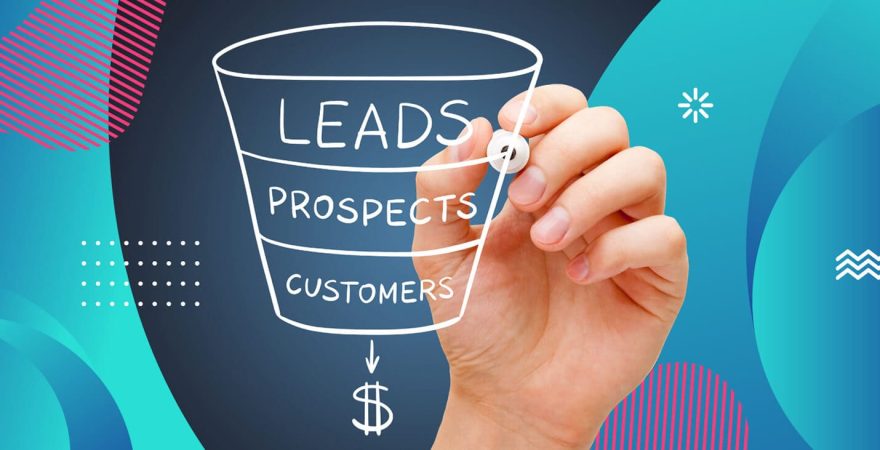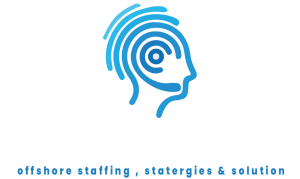
If you operate in the competitive sphere of Managed Service Providers (MSPs), understanding the effectiveness of lead generation campaigns is paramount for sustained growth. This blog delves into the vital metrics that help assess, refine, and optimize lead generation for MSP campaigns.
From evaluating lead quality and conversion rates to scrutinizing the cost per lead and overall return on investment, these key metrics provide invaluable insights into the health and efficiency of your campaigns. As the MSP industry continues to evolve, harnessing the power of metrics helps stay ahead, ensure successful customer acquisition, and foster a thriving business.
Lead Generation for MSP – Why is it Vital to Measure Campaign Success
If your campaign is not performing as you want it to, then it will be a massive waste of your time and resources. It’s important to measure the success of your lead generation campaign for the following reasons –
Performance Evaluation – Metrics provide a tangible way to evaluate the effectiveness of lead generation efforts, offering insights into what works and what needs improvement.
Resource Allocation – By understanding which channels and strategies yield the best results, MSPs can allocate resources more efficiently, optimizing budget and efforts for maximum impact.
Strategic Refinement – Continuous measurement allows for ongoing refinement of lead generation strategies. It enables MSPs to adapt to market changes, customer preferences, and emerging trends, ensuring campaigns stay relevant and effective.
Return on Investment – Measuring campaigns helps determine the ROI, ensuring that the resources invested in lead generation for MSP translate into tangible business outcomes and revenue growth.
High Quality Leads – Metrics help distinguish between leads of varying quality, allowing MSPs to focus on attracting and nurturing leads that are more likely to convert into long-term clients.
Competitive Edge – Monitoring and adapting lead generation campaigns based on data-driven insights provide a competitive edge. MSPs can stay ahead by responding swiftly to changing market dynamics and customer behaviors.
Effective Decision-Making – Informed by data, decision-making becomes more strategic and less speculative. MSPs can make adjustments in real-time, enhancing the agility and responsiveness of their strategies.
Continuous Improvement – Measurement is a foundational element of a culture of continuous improvement. Regularly assessing performance fosters an environment where strategies evolve based on real-world results, driving long-term success in the competitive MSP landscape.
Key Metrics to Assess Your MSP Lead Generation Campaign
Do you wish to check the performance of your lead generation for MSP campaign? If yes, then remember to use the following key metrics for proper evaluation and assessment –
Lead Conversion Rate
Lead Conversion Rate is a pivotal metric in assessing the success of MSP lead generation campaigns. Representing the percentage of leads transformed into clients, it provides a clear gauge of campaign effectiveness. A high conversion rate signifies efficient targeting and engagement.
Cost per Lead (CPL)
It is a critical metric that calculates the expense incurred for acquiring each lead and provides valuable insights into the efficiency of marketing spend. By understanding CPL, MSPs can optimize resource allocation, ensuring a cost-effective approach to acquiring quality leads and maximizing the return on investment in their campaigns.
Return on Investment (ROI)
ROI is the compass guiding MSPs by measuring the revenue generated against the costs incurred. It offers a clear picture of campaign effectiveness. This vital metric empowers MSPs to make strategic decisions, allocate resources judiciously, and ensure that every investment translates into tangible business growth.
Lead Quality
Assessing lead quality is paramount as it involves scrutinizing leads to determine their alignment with the target customer profile. By evaluating factors such as engagement and potential conversion, MSPs gain crucial insights into the effectiveness of their campaigns, ensuring a focus on high-quality leads that contribute to long-term success.
Conversion Time
This measures the average time it takes for a lead to progress through the sales funnel. This metric provides valuable insights into the efficiency of the lead nurturing process. A shorter conversion time signifies an optimized and effective journey from lead acquisition to conversion, fostering a more streamlined and impactful sales pipeline.
Click-Through Rate (CTR)
Another important metric gauging the engagement level of audiences with campaign content. Representing the percentage of individuals clicking on campaign elements, a high CTR signifies strong interest and interaction. This metric aids MSPs in refining content strategies, ensuring that campaigns resonate effectively and capture the attention of their target audience.
Conversion Rate by Channel
This is essential in dissecting the performance of different channels in your lead generation for MSP campaign. This offers insights into which channels yield the highest conversion rates, enabling strategic resource allocation. By understanding the strengths of each channel, MSPs can tailor their efforts, optimizing conversions and maximizing the impact of their campaigns.
Customer Acquisition Cost (CAC)
CAC measures the total expenses incurred to acquire a new customer, offering insights into the efficiency and cost-effectiveness of marketing efforts. By carefully assessing CAC, MSPs can optimize budget allocation, ensuring that customer acquisition aligns seamlessly with business goals and financial sustainability.
Sales-Qualified Leads (SQL)
SQLs are the gold standard in assessing the effectiveness of your lead generation efforts. Representing leads deemed ready for conversion by the sales team, SQLs embody potential customers with a high likelihood of conversion. This metric ensures a focused approach, directing resources towards leads poised for meaningful engagement and efficient customer acquisition.
Customer Lifetime Value (CLV)
CLV is a cornerstone metric calculating the total value a customer is expected to bring over their entire relationship with the business. CLV offers insights into the long-term impact of lead generation efforts. By understanding and maximizing CLV, MSPs ensure sustainable growth and enduring relationships with their valued clientele.
Engagement Metrics
Check out the engagement in gauging the effectiveness of your campaigns. Monitoring metrics such as opens, clicks, and social media interactions provides invaluable insights into audience engagement with campaign content. This metric guides in refining your lead generation for MSP strategies, ensuring that campaigns operate effectively and accurately.
Customer Feedback and Satisfaction
Gathering insights from converted leads provides a qualitative understanding of their satisfaction levels and the overall user experience. Customer feedback not only validates the success of lead generation efforts but also guides organizations in refining strategies based on real-world experiences and client perspectives.
Bottom Line
Embracing and analyzing key metrics is the cornerstone of success in MSP lead generation campaigns. From measuring conversion rates and acquisition costs to understanding customer feedback, these metrics collectively form a compass that guides organizations towards informed decision-making and strategic refinement.
The power of data-driven insights is undeniable, and if you are looking for lead generation for MSP then Premium MSP is right here to serve you. Constantly evaluating and optimizing campaigns based on these metrics not only ensures a robust and efficient process but also positions organizations to thrive in a dynamic and competitive landscape.


